What causes bushfires in Australia? Understanding key reasons
Australia is one of the most wildfire-prone countries in the world. However, have you ever wondered “What causes bushfires in Australia?”? In this article, Weather365 is going to analyze factors contributing to these devastating fire events. Keep reading!
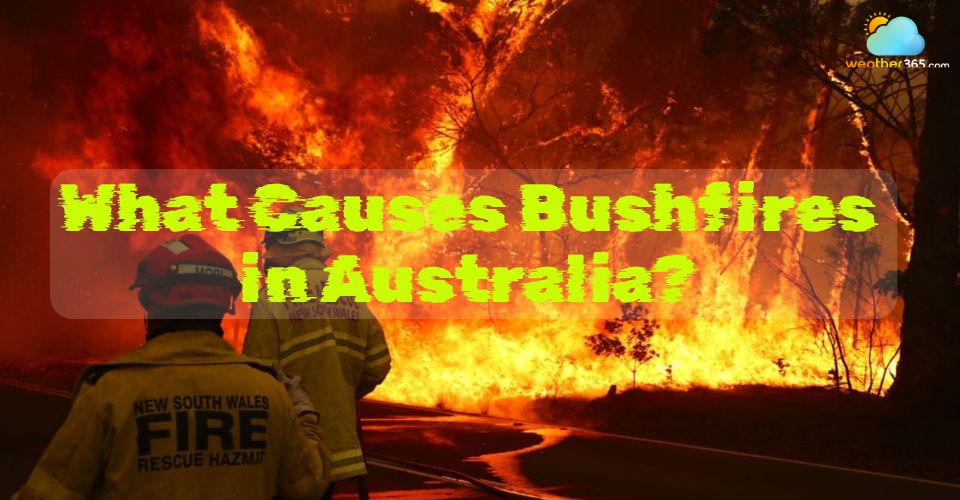
Finding causes of bushfires in Australia
- Bushfires in Australia
- What causes bushfires in Australia?
- Natural causes
- Human Activities
- Environmental & Climatic Factors
- Where do bushfires happen most in Australia?
- Eastern Australia
- South Australia
- Western Australia
- Tasmania
- When do bushfires occur in Australia?
- How to prepare for bushfire season?
Bushfires in Australia
Bushfires are frequent occurrences in Australia because of the continent’s generally hot and dry climate.
In fact, Australia is the most fire-prone country on Earth. Australia’s bushfire seasons are intensifying under climate change.
It is reported that there are about 45,000 and 60,000 bushfires in Australia each year.
In 2025, Victoria recorded its worst fire season since the infamous Black Summer, with 320,434 hectares burned (approximately 70,000 ha) above the past decade’s average.
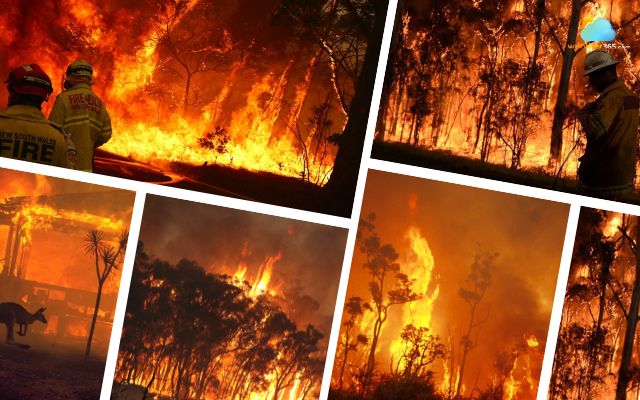
Australia is the most fire-prone country on Earth
Longer seasons and more frequent extreme fire-weather days are now the norm across southern and eastern regions.
Forecasts indicate that by the century’s end, the number of "Very High" bushfire danger days in Victoria could double or even triple, further underscoring the escalating risk.
Bushfires in Australia have a profound impact, such as loss of life, and the destruction of homes, infrastructure, and ecosystems.
Despite these destructive effects, fire also plays a crucial role in Australia's natural environment.
It is an essential part of the continent’s climatic and ecological cycle, helping regenerate certain plant species and maintain healthy ecosystems.
Understanding this dual impact is key to managing bushfires effectively and building long-term resilience.
What causes bushfires in Australia?
Bushfires are a natural part of Australia’s landscape, but in recent years, their frequency and intensity have increased due to human activities and climate change.
Over 90% of bushfires in Australia are caused by people, either accidentally or intentionally.
While human factors dominate, lightning remains the leading natural cause of bushfire ignition.
Natural causes
Lightning strikes are a leading natural cause of bushfires in Australia.
This is particularly true for dry lightning, a phenomenon where thunderstorms produce lightning but little to no rain.
When these lightning strikes hit dry vegetation, they can easily ignite a fire.
These lightning strikes are especially frequent in remote bushland during stormy summer weather.
This makes early detection and response challenging.
While less common than lightning, spontaneous combustion can also be a cause of bushfires.
This occurs when materials like dry hay, mulch, or piles of organic matter build up internal heat through decomposition.
These bushfires usually happen during hot and dry conditions when heat builds up in compacted, decaying vegetation.
Australia’s native environment also plays a role.
Many flammable vegetation types, such as eucalyptus trees, contain volatile and highly combustible oils.
During dry seasons, bushlands, grasslands, and scrub areas become vast fuel sources, making them especially prone to intense bushfires.
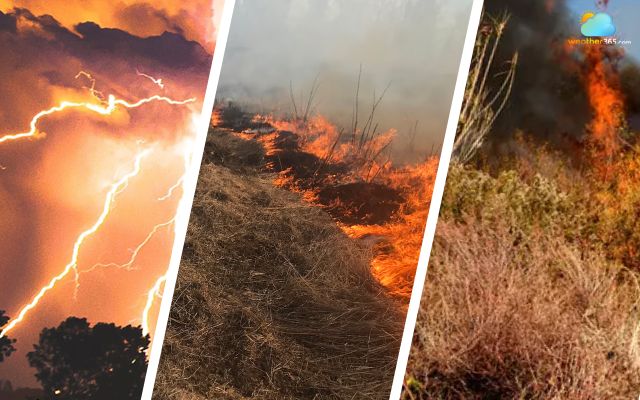
Natural causes of bushfires in Australia
Human Activities
While some bushfires occur naturally, a significant number in Australia are caused by human activities.
One of the most common causes is unattended campfires and discarded cigarette butts.
In dry and windy conditions, even a small spark from a campfire or a lit cigarette can ignite surrounding vegetation, leading to rapid fire spread.
Machinery and power lines also pose serious risks.
Sparks from vehicles, farming equipment, or fallen power lines can start fires, particularly on hot, dry days or during total fire ban days.
These incidents are preventable, but there are still fire outbreaks from machinery and power lines each year.
Another major concern is arson. Deliberately lit fires remain a persistent and dangerous problem in Australia.
Many bushfires are either suspected or confirmed to start intentionally. It puts lives, property, and the environment at risk.
With over 90% of bushfires linked to human causes, raising awareness and enforcing fire safety laws is critical for prevention.
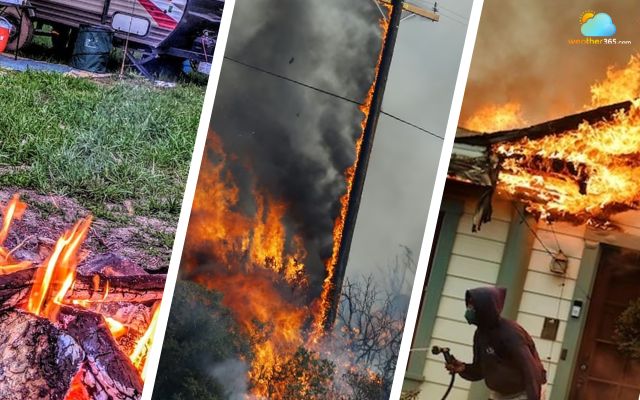
Human causes of bushfires in Australia
Environmental & Climatic Factors
Australia’s climate plays a major role in contributing to dangerous bushfire conditions.
During the summer months (December to March), the country often experiences hot, dry weather with low humidity and strong winds that significantly increase bushfire risk.
These conditions dry out vegetation, making it easier for fires to ignite and spread rapidly.
Drought and El Niño events further intensify the threat. Prolonged drought periods leave fuel loads extremely dry, while El Niño patterns typically bring hotter and drier weather, especially across southern and eastern Australia.
This makes landscapes more flammable and bushfires more likely.
Strong winds are another critical factor, as they can fan flames, carry embers over long distances, and make fires unpredictable and difficult to control.
These extreme weather conditions, driven by both natural climate cycles and human-induced climate change, are key contributors to the increasing frequency and severity of bushfires in Australia.
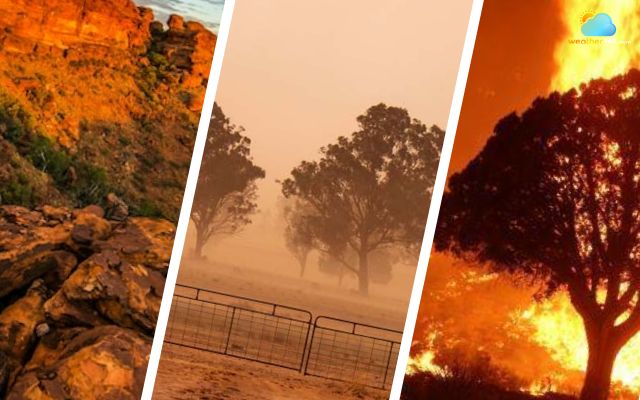
Climate and weather conditions also cause bushfires in Australia
Where do bushfires happen most in Australia?
Bushfires can occur across Australia, but certain regions are more vulnerable due to their climate, vegetation, and terrain.
Eastern Australia
Eastern Australia is consistently the hardest hit. States like New South Wales (NSW), Victoria, and Queensland experience severe fire seasons almost every year.
Coastal regions and densely wooded areas, particularly eucalypt forests, face a high risk during the hot, dry summers.
South Australia
South Australia is also highly prone to bushfires, especially in areas like the Adelaide Hills and rural zones.
The state's dry climate, prolonged heatwaves, and strong winds create ideal conditions for fast-moving fires.
Western Australia
In Western Australia, bushfires frequently impact the southwest and interior regions, where the dry, rugged landscapes can fuel large, uncontrollable fires.
Tasmania
Although Tasmania is generally cooler, its dense forests and mountainous terrain make it susceptible during dry periods, particularly when lightning ignites fires in remote areas.
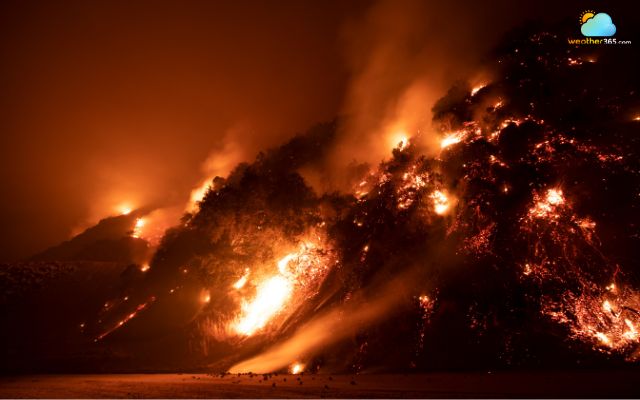
Most wildfire-prone areas in Australia
When do bushfires occur in Australia?
Bushfire season in Australia generally spans from October to April, lasting late spring through early autumn.
The peak fire danger months are typically December to February.
At this time, temperatures soar and vegetation becomes extremely dry, creating ideal conditions for fires to ignite and spread.
However, extreme weather events such as heatwaves or dry thunderstorms can trigger bushfires outside the usual season.
Knowing the Australian bushfire season is vital to raising year-round awareness and preparedness.
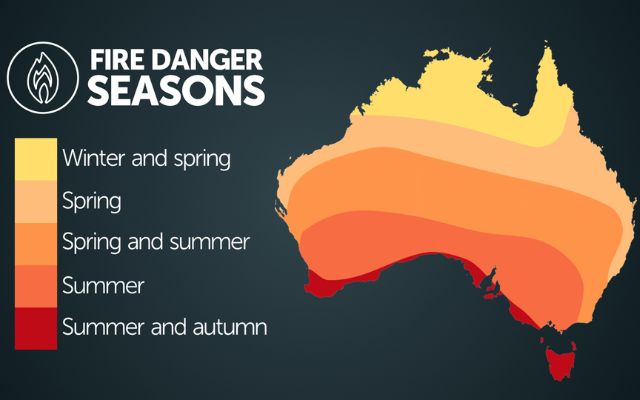
Fire danger seasons
You may also like this: Top 10 worst bushfires in Australia
How to prepare for bushfire season?
Preparing for bushfire season in Australia is crucial for protecting your home, property, and life. Here are key steps you should take:
👉 Create a Bushfire Survival Plan: Know when to leave, where to go, and how to stay informed during an emergency. Ensure everyone in your household understands the plan.
👉 Clear Vegetation and Debris: Remove dry leaves, branches, and flammable materials from around your home, roof, gutters, and garden.
👉 Maintain Defensible Space: Keep grass trimmed, trees pruned, and firewood or gas bottles stored well away from your home.
👉 Prepare an Emergency Kit: Include essentials like water, food, medications, protective clothing, a flashlight, radio, and important documents.
👉 Stay Informed: Monitor local weather forecasts, fire warnings, and alerts via official sources like the Bureau of Meteorology and state fire services.
👉 Ensure Access for Firefighters: Make sure driveways are clear and visible, and your home has clearly displayed address signage.
These proactive steps can significantly reduce the risk and impact of bushfires during Australia’s peak fire season.
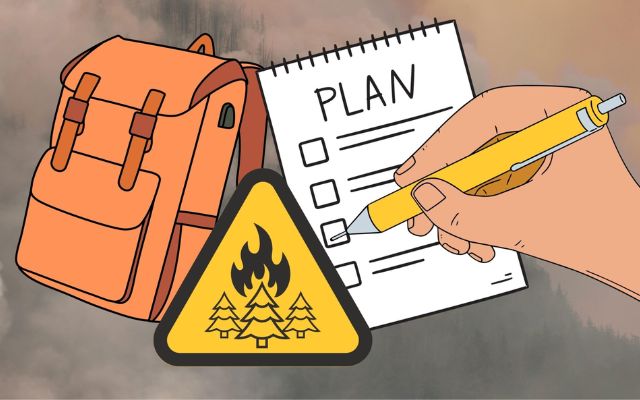
Prepare for wildfire
Conclusion
Bushfires are a dangerous and ongoing issue in Australia. It’s essential to understand “what causes bushfires in Australia?”, most wildfire-prone areas, and preparedness tips to reduce the risks to life and property.

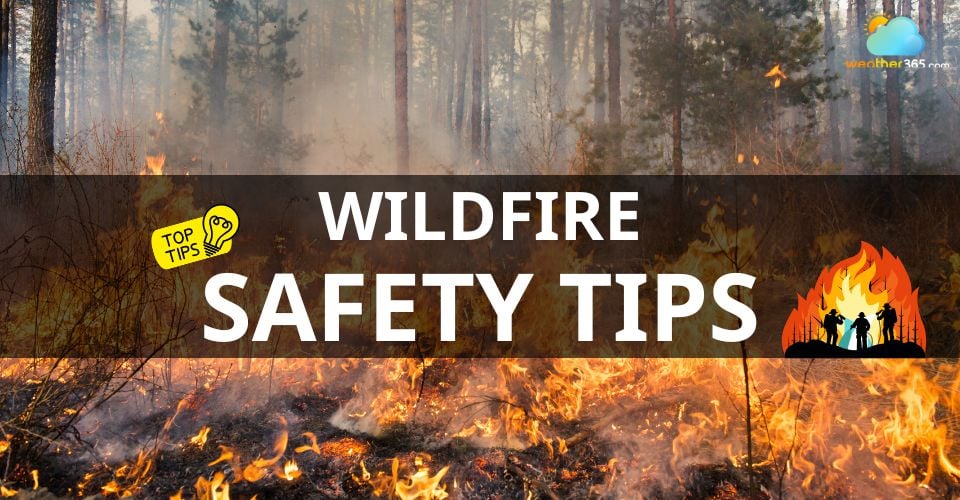
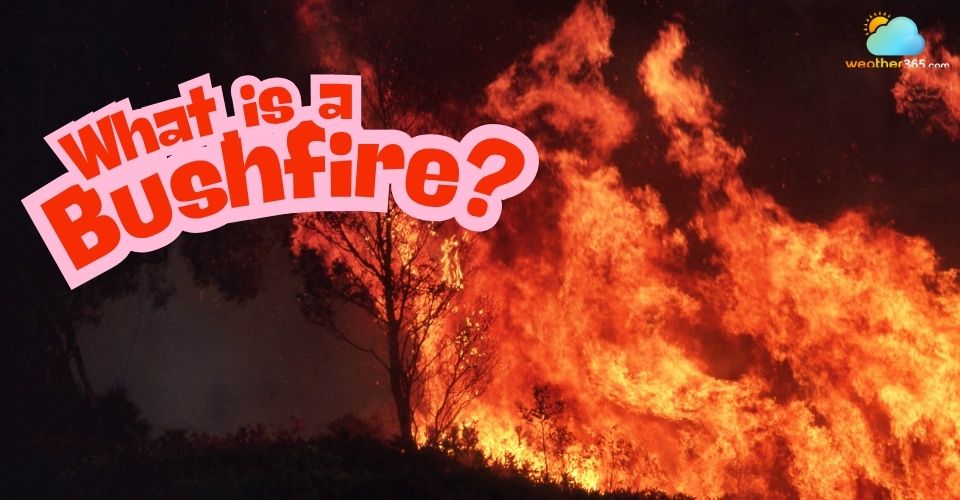
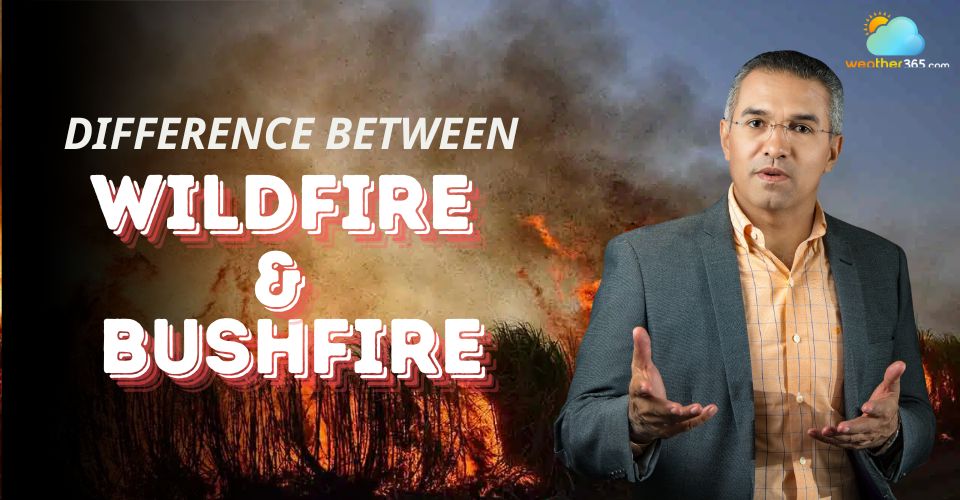
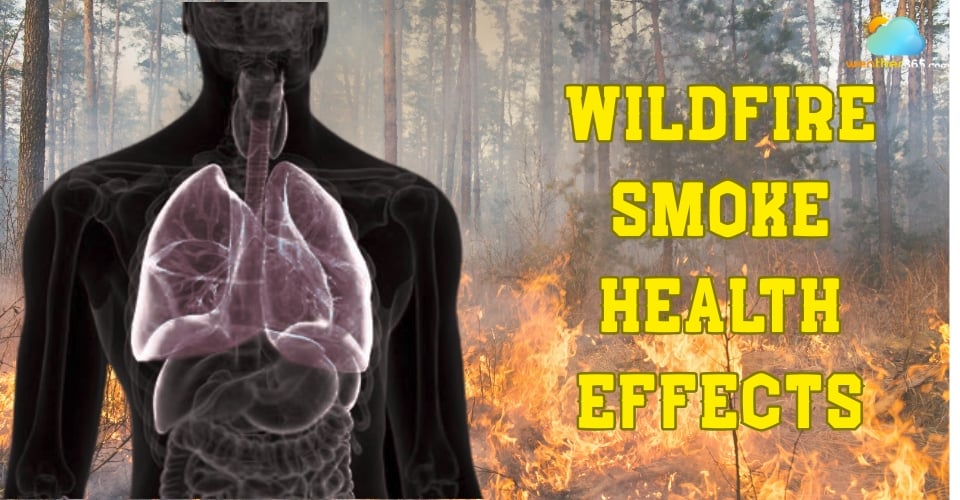
0 Comment
Leave a comment
Your email address will not be published. Required fields are marked *